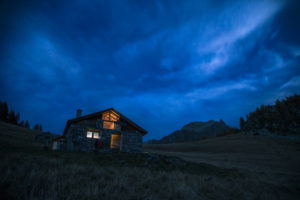Montana Housing: Big yards? Out. Cohousing? In.
A new generation of Montana home buyers is considering cohousing, co-ops, live/work style units, and other nontraditional housing products in lieu of single-family homes. While traditional homes still appeal to some buyers, rising prices and changing values signal an evolving market.
What’s changed? And how can builders be responsive? Research indicates that younger buyers are ditching hours of yard maintenance for more time spent on outdoor recreation. That might be especially true for newly minted Montanans looking to escape concrete jungles in larger metros. A survey of Missoula residents found that having a home with access to dog parks far outweighed proximity to playgrounds, which makes sense given declining birth rates while pet ownership continues to rise.
(Check out the full report here: HOME Report 2021 MSLA)
But beyond fewer expansive lawns and more furry friends, a lack of new development plays a role in buyer decisions. Likely tired of competing with dozens of potential buyers for the few available traditional, freestanding homes, respondents to the survey showed that just 16% would only consider a single-family home. It’s clear that buyers understand that other housing options would likely be more accessible – and affordable.
Montana Housing Affordability
Affordability plays a big role in the shifts across the housing market. A lack of traditional home product and stagnating wages have forced many buyers to consider the typical starter home alternatives. Younger buyers want to start building equity in any unit, open to townhomes, co-ops, or even tiny homes. Builders would be wise to consider these products to serve residents with flexible preferences but deep concerns about securing housing.
“I finally have a job that should provide enough to buy a home and would have a year ago. Now, I’m feeling hopeless.” -HOME Report response
Indeed, insufficient savings isn’t an issue for many potential buyers. In the HOME report, nearly 30% of respondents noted they could generate a $20,000+ down payment, with another quarter able to assemble a $10,000 – $20,000 down payment.
As a result, it’s no surprise that nontraditional housing options are gaining popularity. Bozeman’s cohousing community has only just broken ground and already features over 40 residents. In Missoula, an early announcement of live/work units generated calls to get on a waitlist for the property.
Interested in learning about alternatives to traditional single-family housing development? Contact Matt Mellott for more info.




